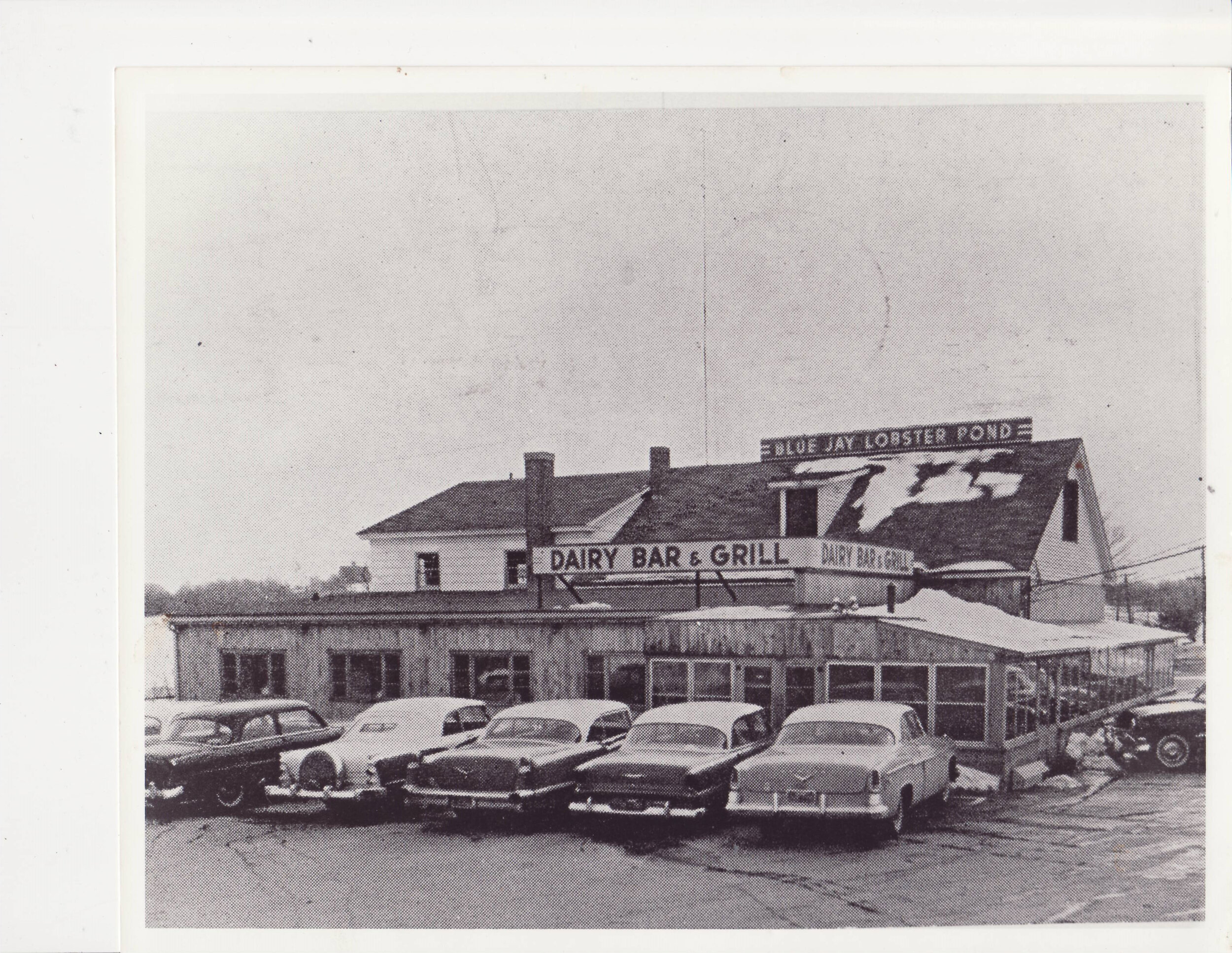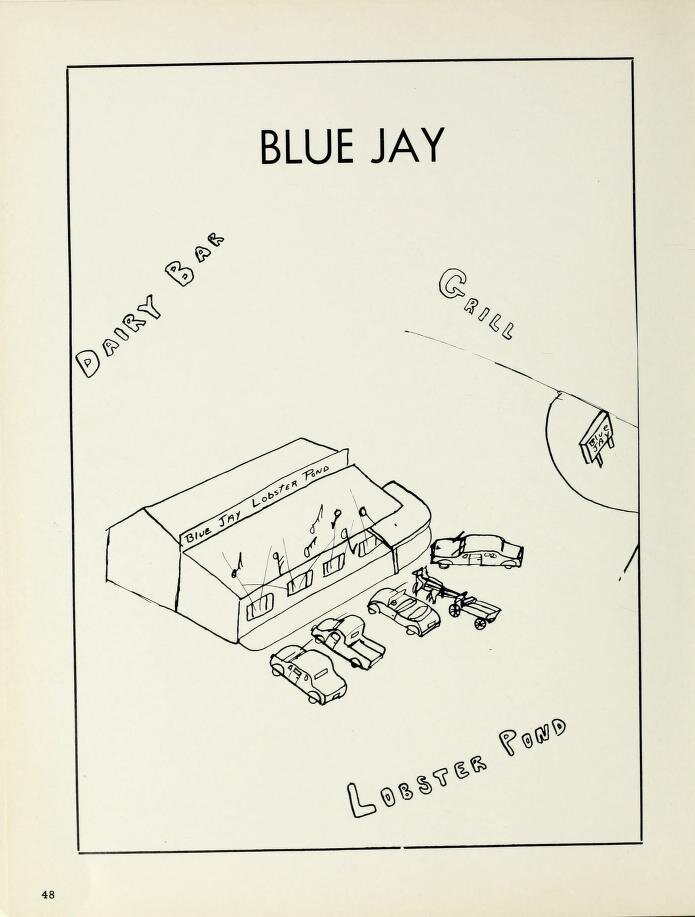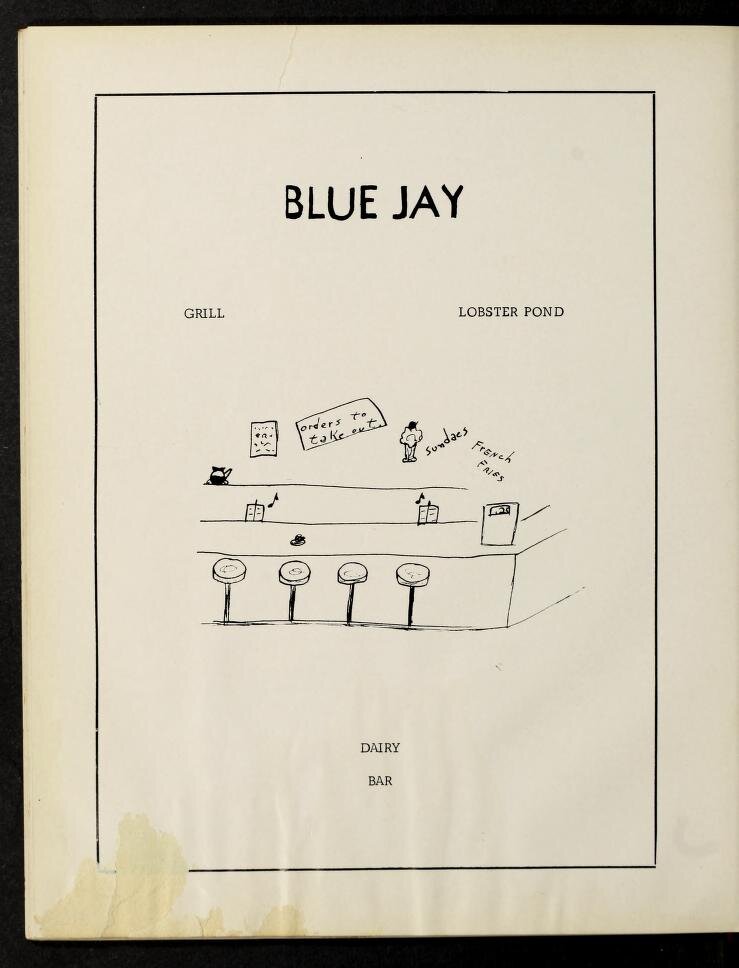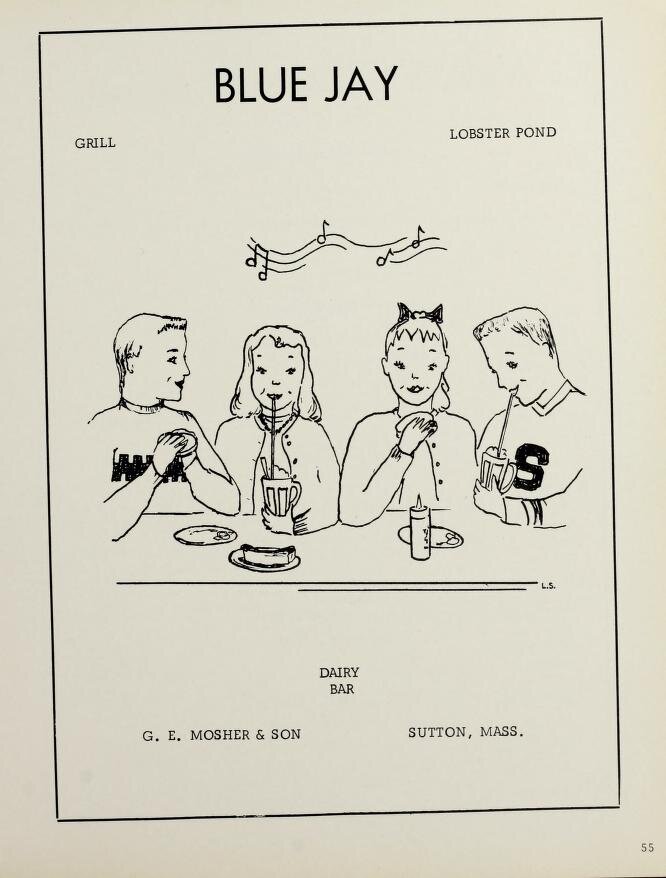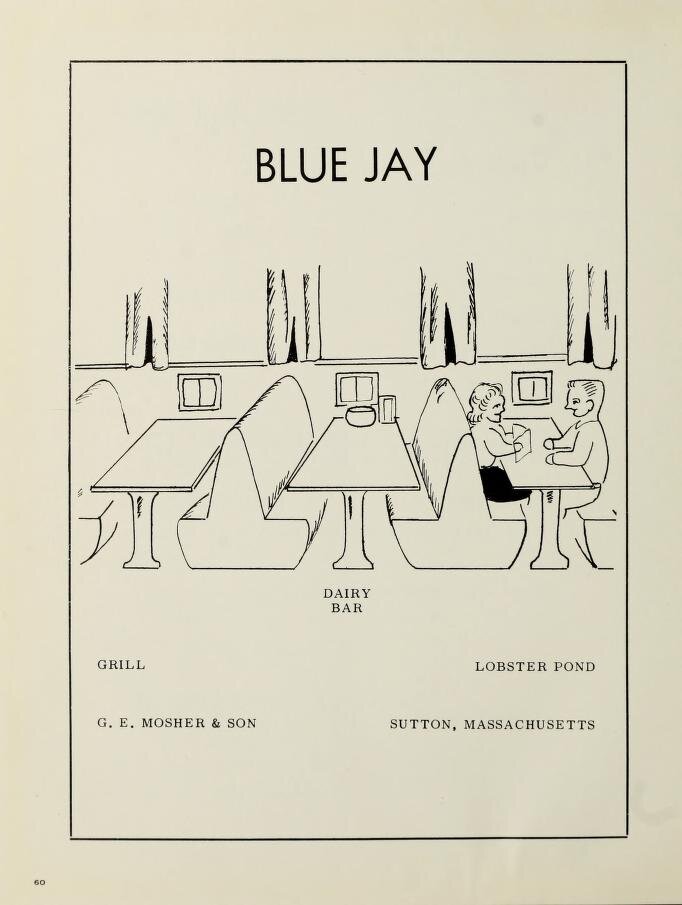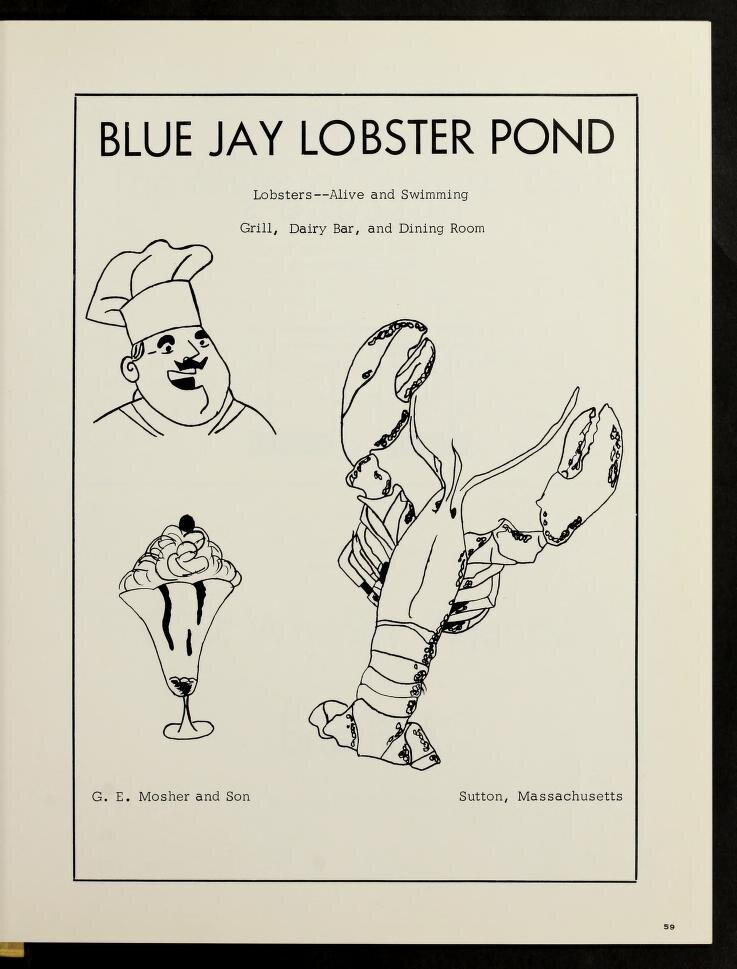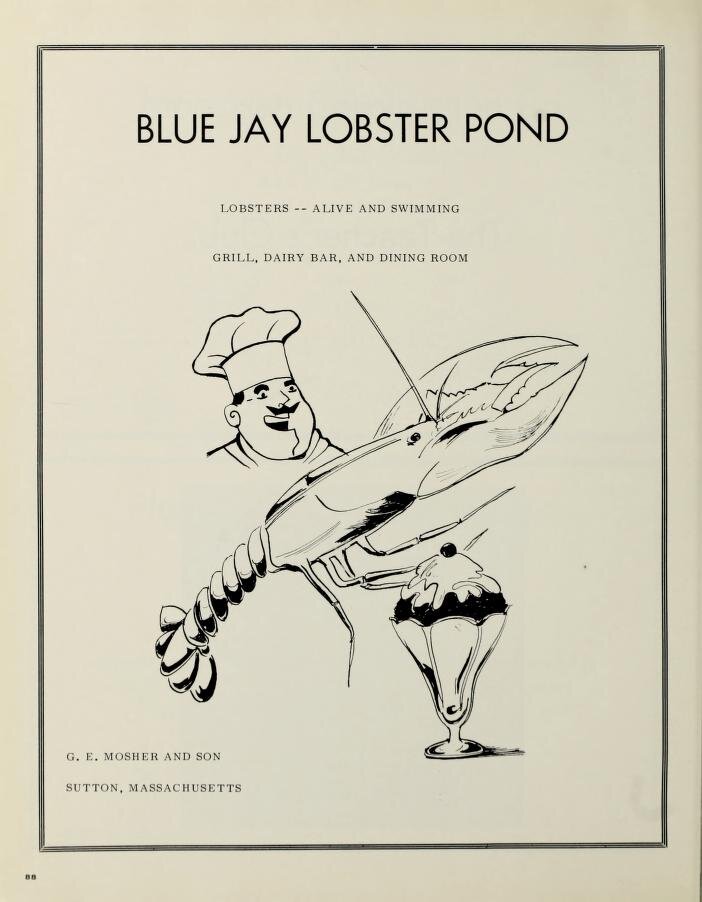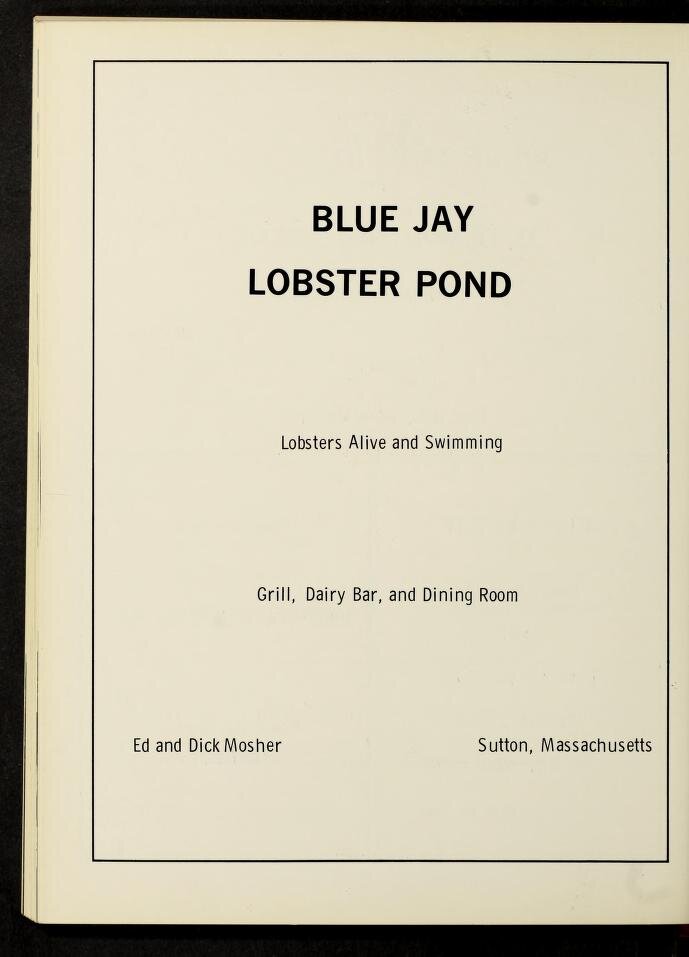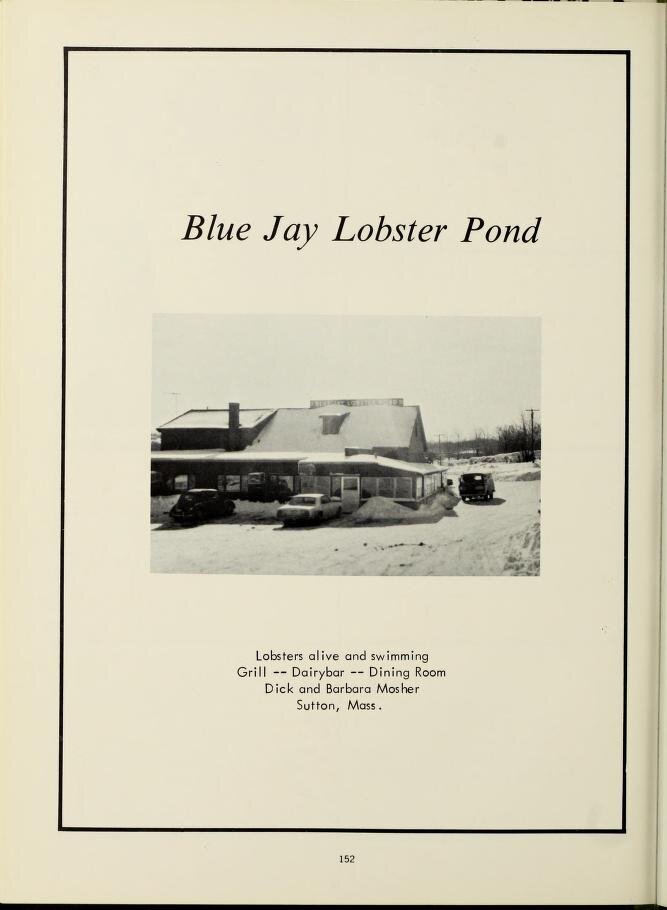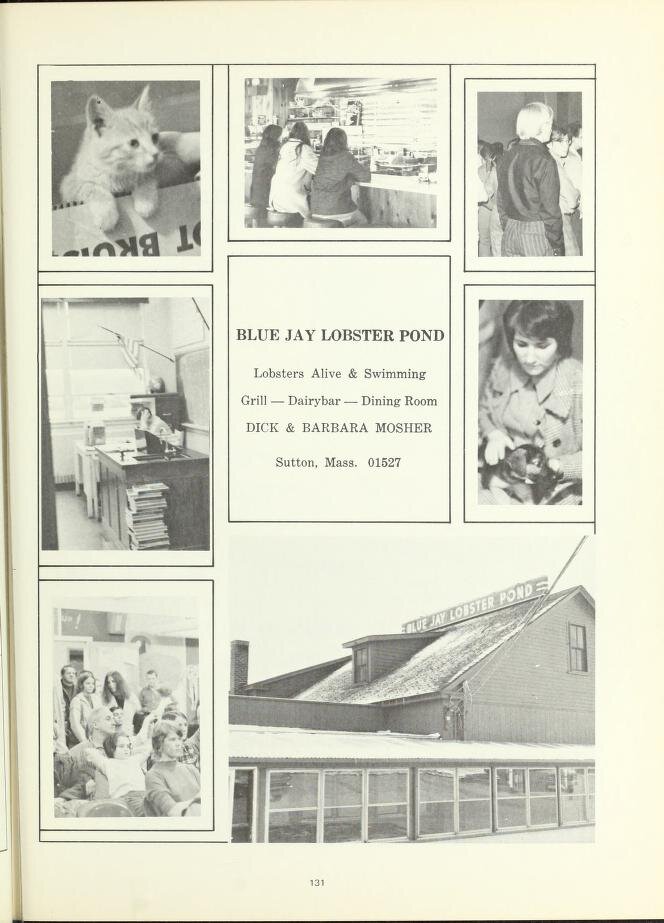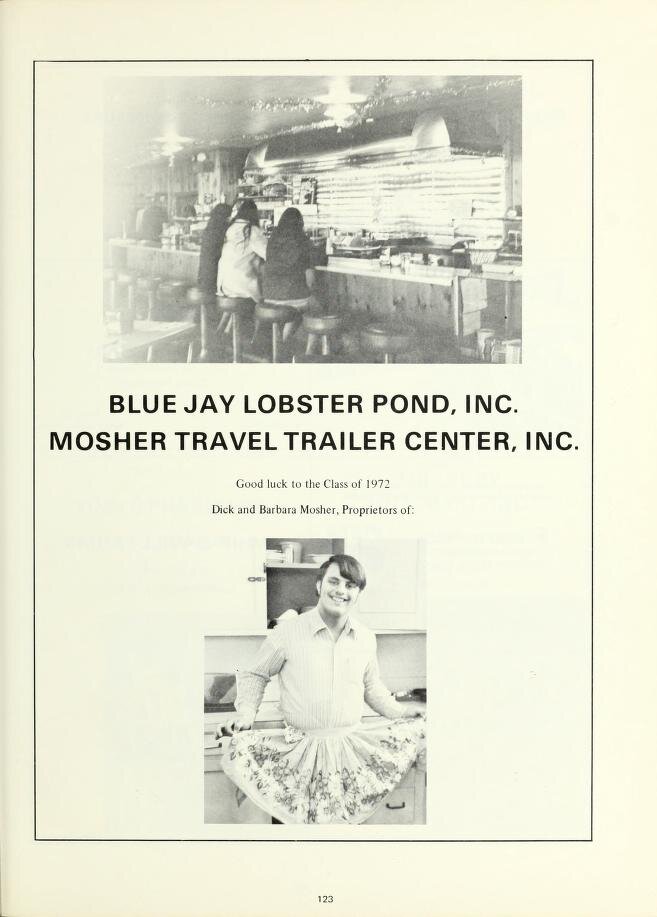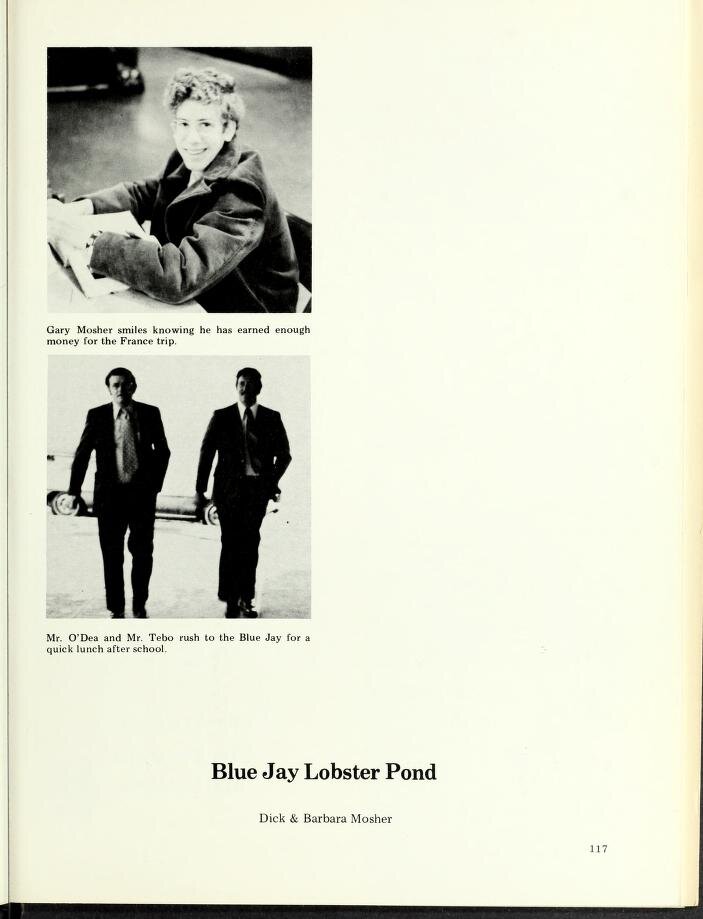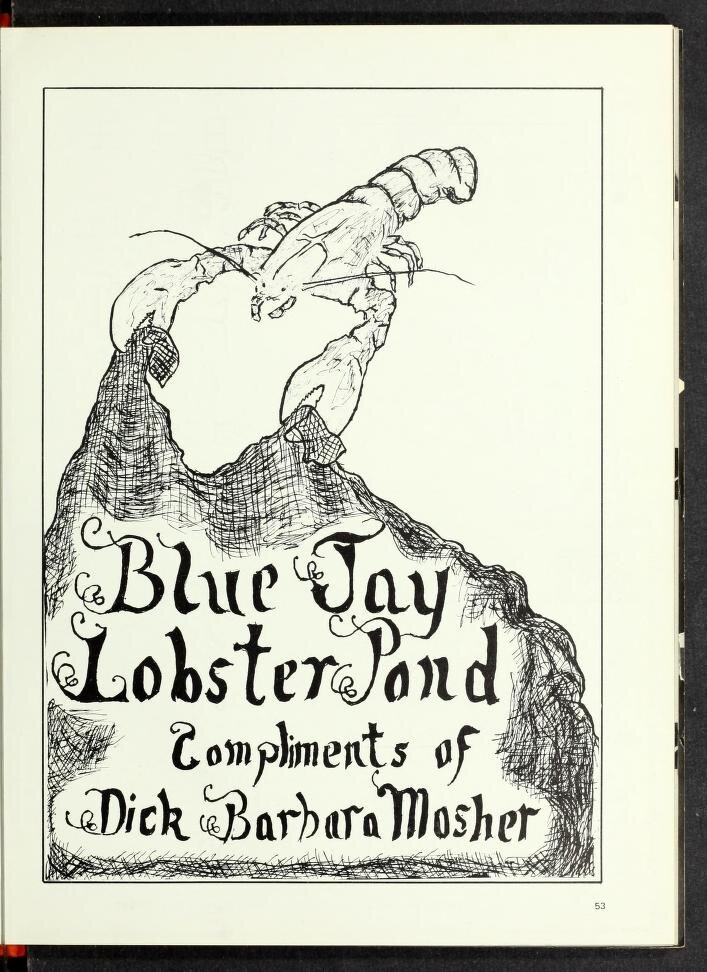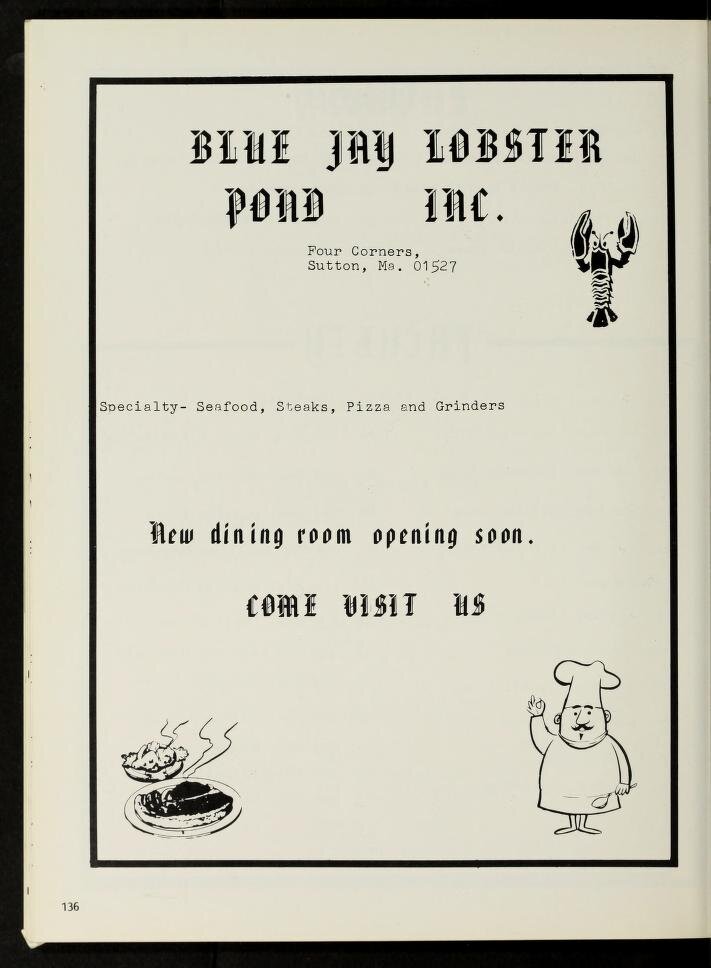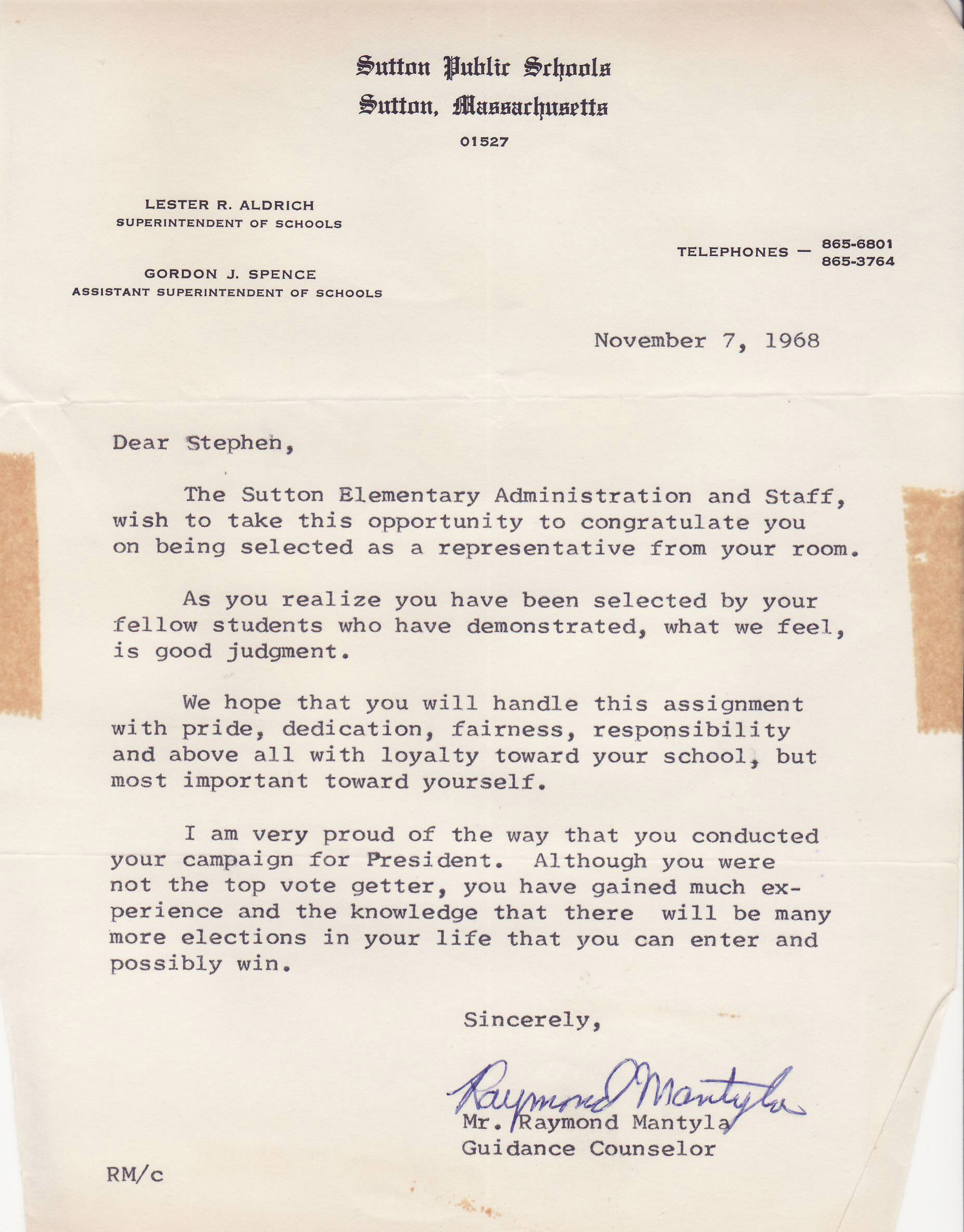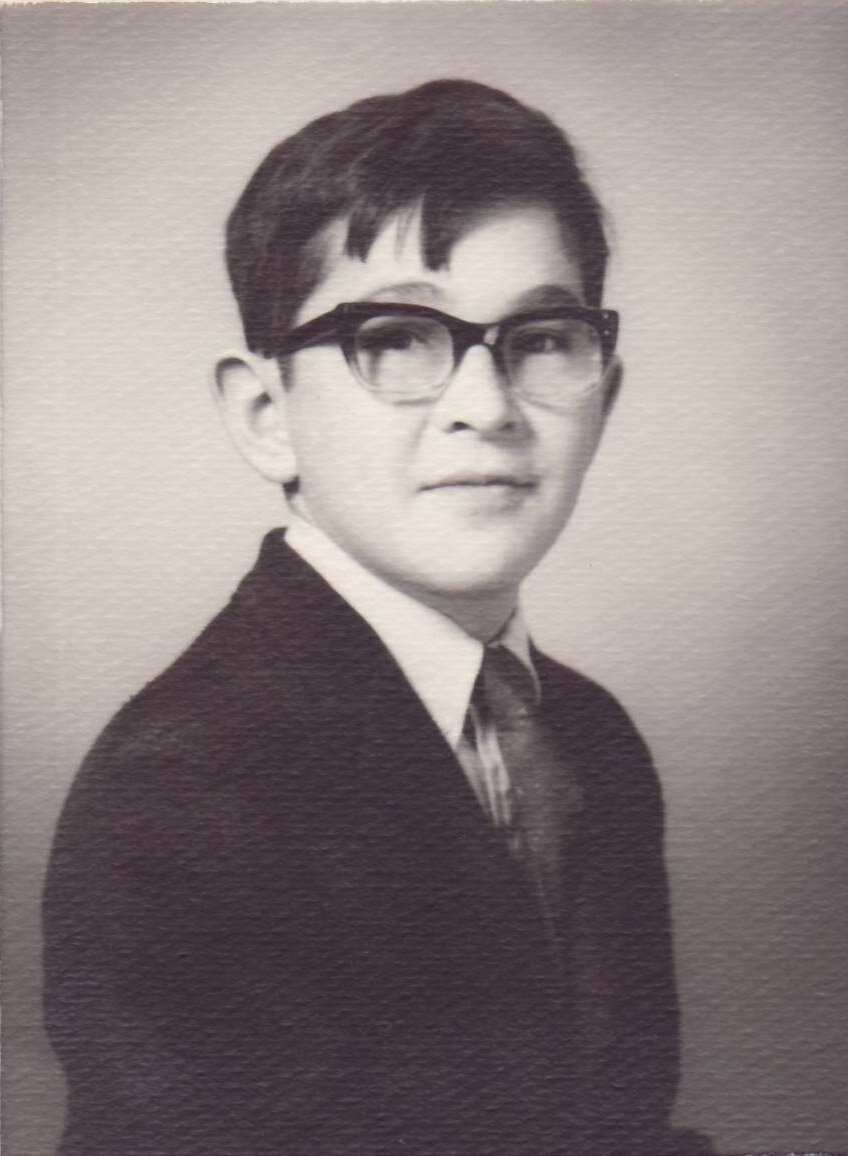By Steve LeClaire
While cleaning out my parent’s home on Boston Road recently, I came across this fascinating photo. It shows the home on Boston Road that would be owned by my grandparents, Stephen & Mary Benjamin from 1927 to 1953. I’d never seen this picture growing up, and immediately knew I’d struck gold. My grandmother’s scrapbook only had pictures back to 1927, so I knew this was the earliest picture that existed of the property. It shows seven people who appear to be the owners or residents. I’d never seen the white picket fence in any photos my grandmother had. Who were the people in the picture and when was it taken? On the back, in script I did not recognize it said: “Esq Sibley Estate, Later John D. McCrate followed by James W. Stockwell. So I knew I had the right place. I set out with the two volumes of the Sutton Town History to find out what I could and make some educated guesses. Here’s what I found out:
The Whipples -
Not many know the history of what is currently St. Mark’s Catholic Church Rectory on Boston Road. The Sutton Town History says “the original upright part of the house was presumably built by John Whipple sometime in the 1760’s.” Tracing the Whipples is complicated, as there are several generations of ‘Johns’, as well as second and third marriages after deaths. Whipples feature strongly in the settling of Rhode Island. John Whipple I, was born in 1695 in Salem Mass, and died in Sutton in 1740. He served as Sutton’s Town Moderator off and on between 1725 and 1730, and as Selectman between 1721 and 1727. My guess is that he arrived in Sutton in 1721, just before the birth of his son, but I’m unable to ascertain where he lived at first. One of John’s earliest recorded acts as a selectman in 1723 was to ‘be (on) a commity to dispose of ye room allowed for Pews to such Inhabitance of Sutton as they according to their best discressing (discretion) shall judge meet.” Whipple was assigned ‘front 5 foot and 3 inches, deep 5 foot and 6 inches, being on the west side of the south door’. The new church on the common was barely 4 years old. He is then sprinkled throughout the town meeting records of those earliest years, amongst those charged with hiring, handling salary disputes and eventually dismissing the first minister, Rev. John McKinstry, and hiring Rev. David Hall.
His son John, later Capt. John Whipple II was born in Billerica Mass in 1722. He married Susanah Putnam in Salem. As this John Whipple would have been 45 years old in 1767 when the main portion of the Sutton house is estimated to have been built, it is probable that this is the John Whipple referred to in the Town History as the builder of the house. He died in Central Falls Rhode Island in 1807, and is buried there. The only official mark John II left of his time in Sutton, is the recording of the birth of his son John Whipple III, born on March 15, 1766. When John III was born in Sutton to Captain John and Susannah Putnam, she was 42 he was 44, perhaps old for child bearing years by the standards of the day. The Town history refers to John III as ‘Jr’, and says he was educated at Leicester academy, before marrying Anna Hall of Sutton in 1794. They had ten children together, and moved to Charlton Massachusetts, where he died in 1847 at 81 years of age. He was buried there, and left behind a large estate. John Jr ( or III) also had a half- brother, ‘Deacon John Whipple’ (1748-1772) from Captain John’s first marriage to Sarah Cummings. The half- brother and family are buried in South Sutton Cemetery. Confused?
Rev. Edmund Mills -
John Whipple Jr (III), conveyed the property to Rev. Edmund Mills in 1803. Mills occupied it about 15 years, to about 1818, when the family moved east to Sutton Center. ( to the Halls-Mills house ) Mills was born in Kent, CT in 1752. After graduating from Yale College in 1775, he married widow Abigail Moore Packard in 1789. Rev. Edmund Mills was ordained pastor of the First Congregational Church in Sutton on June 23, 1790. Before the move to ‘Singletary Farm’, Mills owned the ‘Major Elliot’ home, later owned by L.W. Howard as of the writing of the Sutton History Vol 1 in 1876, and currently owned by Keith Downer. Mills brought up two of Packard’s children there, and the couple had six children of their own. Mills died in Sutton in 1825. In 1826, the Town voted ‘to procure gravestones to the Rev. Edmund Mills grave ( in Sutton Center cemetery ) said stones not to exceed forty dollars.’
Hon. Jonas Sibley, then by his son Jonas L. Sibley, esq.
Brothers John and Richard Sibley arrived in Salem MA from England in 1629. John’s sons Joseph, John, and Jonathan were amongst the original proprietors and first 30 families to settle Sutton. Five generations later, Jonas Sibley was born March 7, 1762 in Sutton. Jonas and wife Lydia had 3 children. He represented the district for nineteen years in the state legislature and was also a state senator. He died in 1834. His youngest, son Jonas Leonard Sibley was born Jan 4, 1791 and graduated from Brown University, class of 1814 and was admitted to the bar in 1817. Although Jonas and Jonas Leonard were ‘engaged in agriculture’, they both found time to be active public servants. Jonas L. represented Sutton for several years in state legislature, and was eventually appointed US marshal for the port of Boston by President Jackson himself. The elder Sibley served as Town Moderator between 1802 and 1809, and the younger between 1812 and 1833. He served as Sutton’s Town Clerk between 1823 and 1830, and served on the School Committee.
The ell of the house was built during the Sibley’s ownership, presumably between 1830 and 1850 and was used as a law office under Jonas L’s tenure. The 1850 census lists the value of the farm at $2,250 encompassing 80 acres of improved land and 26 acres of unimproved land, $75 dollars-worth of machinery, 1 horse, 5 milk cows, 2 working oxen, 13 other cattle, and one swine. The value of the livestock was set at $475 dollars. After 35 years of marriage, Jonas Leonard Sibley died in 1852. Margaret died in 1858.
Jonas Leonard had married Margaret Nusom Monroe in 1817. Together, they had 8 children. 4 of whom were living at the time of the writing of Sutton History, volume 1.
1. The eldest, Susan Maria Sible was born in Sutton in 1818. She married the Honorable John Dell/Dennis McCrate in Boston on January 2, 1851. McCrate was born in Wiccasset Maine on October 1st, 1802, and died in Sutton in 1879 at 77 years of age. The McCrates had no children.
2. Daughter Joanna LeBaron Sibley was born May 1st, 1820. She marred the Rev. John J Pierpont in Sutton in 1844. They moved to Medford, where she died in 1852. She is buried in Sutton Center.
3. John Monroe Sibley was born on August 7, 1822 in Sutton. He married Experience Clark Wheelock on September 6, 1848 in Warwick RI. He died on June 4th, 1900 in Sutton. The couple went to California for a time, and had one son, John Pierpont Sibley.
4. Frances Lydia Sibley was born Feb 22, 1824 in Sutton and died Oct 21, 1827 in Sutton.
5. Mary LeBaron was born March 16, 1826 and died June 3, 1830. Mary and Frances are both buried in Sutton Center.
6. Henry Jonas Sibley was born on April 21, 1828 in Sutton. He married Mary Hutchinson of Lebanon CT on Sept. 23, 1878 in Alameda, California; died on Sept. 17, 1889 in Sutton, MA. As of the 1880 Census, Henry & Mary were living in California, where Henry worked as a real estate agent. Henry died in 1889, and is buried in Sutton. Mary died in 1904, and is buried in California.
7. Frances Mary Sibley, born August 29 1830 in Sutton married James Willard Stockwell, son of Simeon & Delia ( Holbrook ) Stockwell, on June 25th, 1867 in Sutton. She died ‘suddenly and unexpectedly’ in Sutton on November 10, 1900.
8. Margaret Louisa Sibley was born October 26, 1832 in Sutton. She died on January 29, 1836 in Sutton.
The McCrates & Stockwells -
Jonas L Sibley’s eldest daughter Susan (b. August 31, 1818 ) married Hon. John D. McCrate on January 2nd, 1851. McCrate was born in Wiccasset Maine on October 1st, 1802 and had entered law school at the age of 13, graduated at 17, and began his profession in Maine at age 20. He was a member of the House of Representatives from Maine and together he and Susan became the owners of the Sutton property around 1852, when McCrate retired from law ‘to engage in agricultural pursuits.’ He died in Sutton in 1879 at 77 years of age. The McCrates had no children.
Another of Sibley’s daughters, Frances Mary, born in 1830, married James Willard Stockwell of Sutton in June of 1867. Stockwell was born in the Eight Lots district in 1838. He registered for the Civil War draft in 1863 at age 25 as required, but apparently was never called up. As a point of interested, he is listed right along with Hollis Sherman, also age 25. Sherman’s son Louis would purchase ‘The Elms’, the home east of Stockwell on Boston Road in 1912.
As of the 1870 census, Stockwell is listed as a lumber dealer. The Stockwells apparently had no children of their own, but James had guardianship for Hattie L Warfield, born in 1857.
The Stockwells became the owners of the property upon Susan McCrate’s death in Boston in 1889. Sutton Town History vol II states: “(The Sibley sisters) were cultured women, respecting old customs and traditions. Mrs. McCrate was regal in bearing, of great courage and determination, yet kindly in nature. Frances Stockwell was a woman of unusual charm and grace. On November 10, 1900, as she returned to the room after bidding goodbye to guests whom she had entertained for the evening, she sank to the floor and passed away in an instant. Thus, quietly came the end of her beautiful life.” James W. Stockwell himself gave many years of public service as Town Treasurer, Tax Collector, and as State Senator from the district in 1879. He was chairman of the School Committee, and instrumental in the establishment of the first Sutton High School. He was a member of the Olive Branch lodge of Masons.
Mr. Stockwell married his second wife, Joanne Garvin on April 23, 1902. Because of ill health, the Stockwells sold the farm in 1927 to Stephen E. Benjamin of Millbury. Mr. & Mrs. Stockwell had by then moved to the Bancroft Hotel in Worcester, where they lived until their deaths in 1931 and 1935 respectively.
The 1900 Census Survey, taken just prior to Frances Stockwell’s death shows the following residents:
James W. Stockwell: Head of family, age 62
Frances Stockwell: Spouse, age 69
Joanna Garvin: Sister in law, age 28. Her birth date says 1851, ( tombstone says 1854) which would make her 49. There are many other discrepancies re: Joanna Garvin. Her parents were both born in Ireland, making her 1st generation in this country. In other documents and census, she is listed as a ‘domestic servant’. At any rate, she was living ‘with the family’ prior to Francis Stockwell’s death. If she was a ‘sister- in- law’ to the head of the household, I’ve yet to find the connection.
Also listed as residents on the 1900 census:
John M Sibley: Brother in law, ( son of Jonas L. Sibley ) age 77, married in Warwick RI in 1848. He died June 4, 1900.
Eliza Farrill: Servant, age 32 from PA.
So, who are the seven people in the photo? We’ll never know for sure. But with some extrapolation and known pieces of the puzzle, one can make educated guesses. Most of the Sibleys, McCrates, and Stockwells were gone by 1900. The straw boater hat is a clue. Although these hats existed as early as the 1820’s, they were not ‘popular’ until the 1880’s through the 1930’s. The full- length dresses appear to be turn of the century in style. If we ‘assume’ that the women in the white dresses are Susan Sibley McCrate ( who predeceased her sister) and her sister Frances Sibley Stockwell, ( who died in Boston in 1900 ) the picture could be circa 1890, with Susan being about 70 and Frances being about 60.
There are three men in the picture. Since we know John D McCrate died in 1879, it is unlikely he is pictured here. James W. Stockwell would have been only 52 in 1890, and John M. Sibley would have been 67. But let’s assume the picture is circa 1879. Is the man seated behind the fence - who appears to be the oldest of the group - indeed McCrate? He’d be about 77. Then, are the couple in the fence opening James W. Stockwell ( age 41) and wife Francis ( age 49 )? Is the short woman in the hat Joanna Garvin, age 22? Is the man in the boater John M Sibley at 56? With wishful thinking, it could be possible.
I’ll never know, without seeing proven pictures of all those named, but it’s fascinating to me to put together the pieces of the puzzle of those who went before us, and made their lives on Boston Road. I find them all friendly ghosts. I welcome any corrections or further information.







